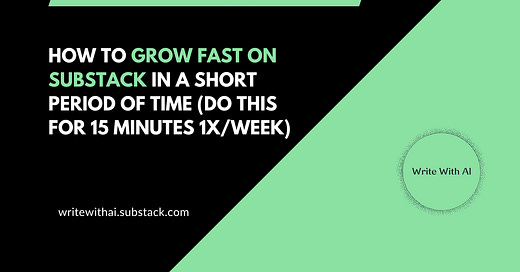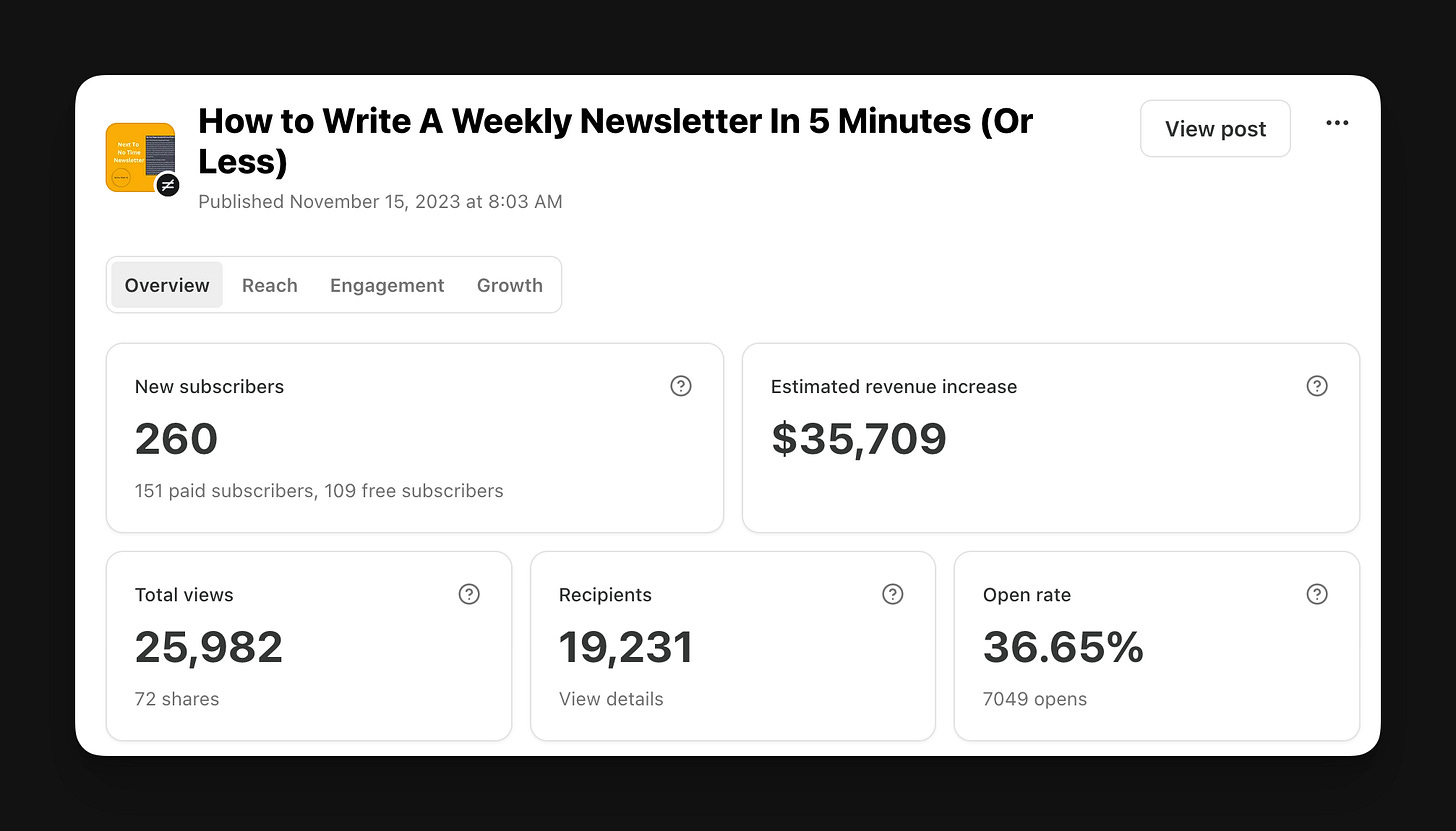If you’re already writing with AI, why not monetize those same skills and land high-paying clients as a Premium Ghostwriter?
Click here for a free, 5-day email course on how to get started.
Writing on Substack is a game.
The game goes like this:
Write 10 things
See which 1–2 perform the best
Take the structure/tone/topic from those 1–2 and write 10 more new things (variations)
See which 1–2 perform the best
Repeat forever
If you study any writer or creator online who has grown quickly over a short period of time, this is what they did.
They created a bunch of stuff.
They studied which pieces of content performed the best.
Then they cut their losers and doubled-down on their winners, over and over again.
I first started playing the game in 2007.
I was 17 years old, a junior in high school, and one of the top World of Warcraft players in North America.
Then I discovered this new website for gamers called GameRiot. It was one of the internet's first 'social blogs'—with an infinite scrolling feed of posts, similar to Facebook or Twitter, and a leaderboard of the most popular writers on the site. I decided, right then and there, I was going to start writing there too. The whole website was a game, no different to me than World of Warcraft.
By the time I graduated high school, I had over 10,000 daily readers and had positioned myself as a powerful voice in the world of competitive gaming.
The lesson?
Attention wins.
On the internet, every single creator—whether you're a writer, a podcaster, a video maker—is competing for attention.
Which means, as a writer, you aren't just competing against other writers. You're also competing against cat videos and viral memes and all the other types of content someone could consume in a day.
Unfortunately, most writers play the attention game unconsciously…
And then wonder why they aren't succeeding.
They assume they know what their audience wants
They make decisions based on gut feelings instead of feedback
They think they know who their readers are and what topics will resonate
And they have zero data that can confirm whether or not they're correct
People don't care about your assumptions.
They care about getting value.
And they'll tell you what they value through their behavior.
Successful writers play the game consciously: studying what works, tracking patterns, and letting their audience tell them what to create next.
Bottom line:
Digital writer’s engineer attention.
Here’s how to play the Attention Game on Substack:
Most people think of Substack as just an email newsletter tool.
But it's actually much closer to those early social blogs I discovered as a teenager. Substack has discovery feeds, recommendation engines, and social features that help readers find new writers. Your posts can go viral within the Substack network. Readers can discover you through other newsletters, cross-posts, and Substack's own algorithmic recommendations.
Which means the same "game" exists on Substack that existed on GameRiot, Quora, Medium, and every other social writing platform.
And you can see exactly which posts get the most opens, clicks, and engagement.
It’s all sitting in your dashboard right now.
Step 1: Head over to your Substack Email Stats (Settings→Stats→Email).
You can see which posts got the most opens, which headlines drove the most clicks, which topics generated the most engagement.
And if you have a paid newsletter, you can see a break down of new free and paid subscriptions by by post.
This is incredibly useful as a writer.
But what does it actually mean when one post gets 65% opens and another gets 23%? Why did that random Tuesday post about productivity get shared 50 times while your carefully crafted weekend essay got 3 shares? Why is your audience 2X more likely to pay for an Alex Hormrozi prompt than a DM sales script?
Step 2: Look at your last week of posts and find the outliers.
Data is the single greatest indicator of what's working (and what isn't working) about your writing.
Most writers look at their analytics and think: "Huh, that's interesting." Then they go write whatever they feel like writing next. If you want to write like that, go ahead, just don’t expect it to get exponential attention.
Instead, when you see something in your library catching fire, you should stop everything you’re doing and think deeply about why this specific piece is performing so well.
Ask:
What’s the tone?
What’s the post saying?
What structure did you use?
Why do you think it’s resonating with so many people?
But most importantly: how can you do it again?
Step 3: When you find a structure that works, exploit it.
If one post gets 10 likes and another gets 50, that's a 5X improvement—clear signal that your audience wants more of that type of content.
For example, on a pattern we’ve seen work on Write With AI is:
How to create {asset} in 15 minutes or less.
After some reflecting, we came to the conclusion, “I think a lot of people enjoyed this piece because it was a fast way to do something that previously took 4-5X longer.”
OK, great.
What did we do?
We doubled-down.
When you find something that works, do it again. And again. And again. And again.
Exploit it to the point where you feel like you’ve exhausted every possible option, every alternative, every variation. Because clearly readers enjoyed something about the first piece. So why not give them more of what they want, just a little bit different?
Writing online is all about increasing your batting average.
And the best way to do that is by doubling-down on your winners.
How To Mine Your Substack Data In Less Than 15 Minutes With The Analytics Analyzer Prompt
The Substack Analytics Analyzer Prompt takes your Substack analytics and turns them into a complete content optimization strategy.
What it does:
Analyzes your content performance - Identifies your top and bottom performers across different topics and formats
Extracts winning patterns - Finds the headline formulas, content types, and topics that work best for YOUR audience
Creates actionable recommendations - Gives you specific "double down," "optimize," and "avoid" strategies
Builds your content calendar - Provides a 30-day tactical plan with exact headlines and success predictions
Instead of guessing what your audience wants, you'll know exactly what works.
Here’s how to use it:
Export your Substack analytics data into a .csv file
Drop it into the prompt below
Run the prompt (AI will analyze and identify the patterns in your data).
The whole process takes about 15 minutes, but the insights you'll get can transform your writing strategy forever.
Here’s the prompt:
Keep reading with a 7-day free trial
Subscribe to Write With AI to keep reading this post and get 7 days of free access to the full post archives.








